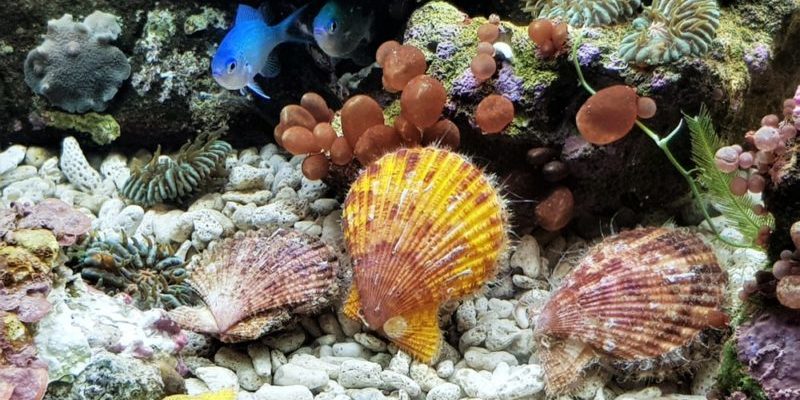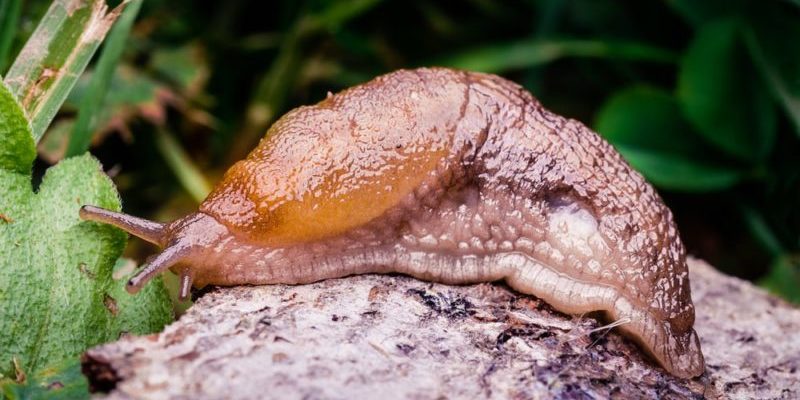The mollusks They are invertebrate animals that are characterized by having a soft body (which in most cases is covered by an exoskeleton, shell or calcareous plates) and a muscular foot as a locomotor organ. For instance: the clam, the squid, the snail or the octopus.
They are usually aquatic animals (salt and fresh water), although many adapted and inhabit the earth’s surface.

Types of mollusks
There are several species of mollusks, since they are the most numerous phylum of invertebrates after arthropods. The eight classes into which mollusks are divided are:
- Gastropods. They are organisms that inhabit marine, freshwater, and surface environments and constitute the largest class of mollusks. The body of gastropods is made up of a head, a muscular foot, and a dorsal shell. For instance: snails and sea or land slugs.
- Cephalopods. They are organisms that live in the sea and constitute a small group. These marine mollusks are characterized by having a flexible body, developed senses, a closed circulatory system, tentacles (derived from the characteristic mollusk foot) and being capable of releasing an ink that they use as a defense method. For instance: octopus or squid.
- Bivalves. They are aquatic animals, mostly marine, which are characterized by having the body inside a shell that has two valves that open and close through internal mechanisms. These shells vary in shape, size, and color depending on the species. For instance: clams, mussels and oysters.
- Scaphopods. They are exclusively marine animals that are part of the benthos, that is, they inhabit the sea floor. They are characterized by their elongated, curved and open shell on both sides (because of this they are also called “tusk shell” or “elephant tusk”). In addition, they have a bilateral symmetry and vary in size depending on the species. For instance: antalis vulgaris.
- Caudofoveados. They are vermiform animals that live in tunnels that dig into the sediment of the seabed. There are very few species of this class and they are small mollusks that lack a shell, foot, and eyes. For instance: Cheatoderma marioni.
- Solenogastros. There are about 250 species of vermiform animals that live in the aquatic environment. These organisms live on the seabed and are small mollusks that do not have a shell. For instance: Epimenia.
- Polyplacophores. They are small organisms, commonly known as “sea cockroaches”, that inhabit rocks in marine ecosystems. Polyplacophores have a simple anatomy consisting of a body covered by a shell, a radula with teeth, and a muscular foot. For instance: Tonicella lineata.
- Monocophores. They are primitive mollusks that inhabit the sea and are characterized by having a bilateral symmetry, a muscular foot and a shell. Currently there are a small number of living species. For instance: Laevipilina cachuchensis.
Characteristics of mollusks
- Respiratory system. Most mollusks breathe through gills, although some species have developed a pulmonary respiratory system.
- Digestive system. Mollusks feed through an organ called the radula (which is located in the mouth and has teeth) that they use to scrape the food to be ingested. In addition, they have the esophagus, stomach, intestine, and anus.
- Circulatory system. Most mollusks have an open circulatory system, with the exception of cephalopods that have a closed circulatory system. Mollusks have a heart, aorta, and blood vessels.
- Reproductive system. Mollusks are oviparous, that is, they hatch from eggs. They are organisms that reproduce sexually, although some species are hermaphrodites.
- Anatomy. Mollusks have a soft body that may or may not be covered by a shell. They are also made up of the mantle, an organ that covers the visceral mass and, in some species, secretes calcium carbonate to form the carapace. They move by means of a muscular foot and may or may not have a head, eyes, and tentacles.
- Feeding. Land mollusks are herbivores, while aquatic mollusks are carnivores (although they also base their diet on plankton and algae).
- Habitat. Most of the mollusks live in the marine environment and a smaller percentage in fresh water. Some species have adapted and can live in moist terrestrial ecosystems.
Examples of mollusks

| Clam | Snail apple | Chilean oyster |
| American clam | Snail | Oyster edulis |
| Generous clam | Choro | Black lip pearl oyster |
| Slug | Common limpet | Freshwater pearl oyster |
| Sea slug | Sea hare | Red oyster |
| Common cockle | Mussel | Common octopus |
| Squid | Zebra mussel | Blue ringed octopus |
| Humboldt Squid | Green mussel | Mimetic octopus |
| Giant squid | Nautilus | Common cuttlefish |
| Common garden snail | Abalone | Pharaoh cuttlefish |
| Burgundy snail | Virginia oyster | Scallop |
| Giant african snail | Oyster | Black limpet |
